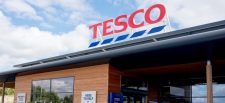The British Retail Consortium (BRC) has reported that Easter treats were more expensive in 2024 due to high cocoa and sugar prices, as food inflation decelerated to its lowest rate since April 2022.
BRC said that Shop Price annual inflation fell from 2.5% in February to 1.3% in March, which was below the three-month average rate of 2.2%. Shop Price annual growth was at its lowest since December 2021.
Food inflation was at its lowest in nearly two years, as it decelerated to 3.7% in March, down from 5% in February. This was reportedly below the three-month average rate of 4.8%, with BRC describing it as the “tenth consecutive deceleration in the food category”.
Fresh Food inflation and Ambient Food inflation both slowed in March, down to 2.6% and 5.2% respectively. In the Fresh Food category, inflation was at its lowest since November 2021.
Helen Dickinson, chief executive of the BRC, said: “Shop price inflation eased to the lowest level since December 2021 last month as retailers continued to compete fiercely to bring prices down for their customers.
“While Easter treats were more expensive than in previous years due to high global cocoa and sugar prices, retailers provided cracking deals on popular chocolates, which led to price falls compared to the previous month. Dairy prices also fell on the month as farmgate prices eased, and retailers worked hard to lower prices for many essentials.”
She continued: “While these figures are good news for consumers, from this month, retailers face significant increased cost pressures that could put progress on bringing down inflation at risk. These costs include a 6.7% business rates rise, ill-thought-out recycling proposals, and new border checks – all at the same time as the largest rise to the National Living Wage on record. The industry needs pro-growth Government policy that supports investment and helps keep down prices for households up and down the country.”
Mike Watkins, head of retailer and business insight at NielsenIQ, said: “The slowdown in inflation continues and a key driver this month was a further fall in food prices. A year ago, food inflation was 15% so this was to be expected. But it is also helped by intense competition amongst the supermarkets as they look to drive footfall, with focused price cuts and promotional offers earlier in the month for Mother’s Day and now again in the weeks leading up to Easter.”









